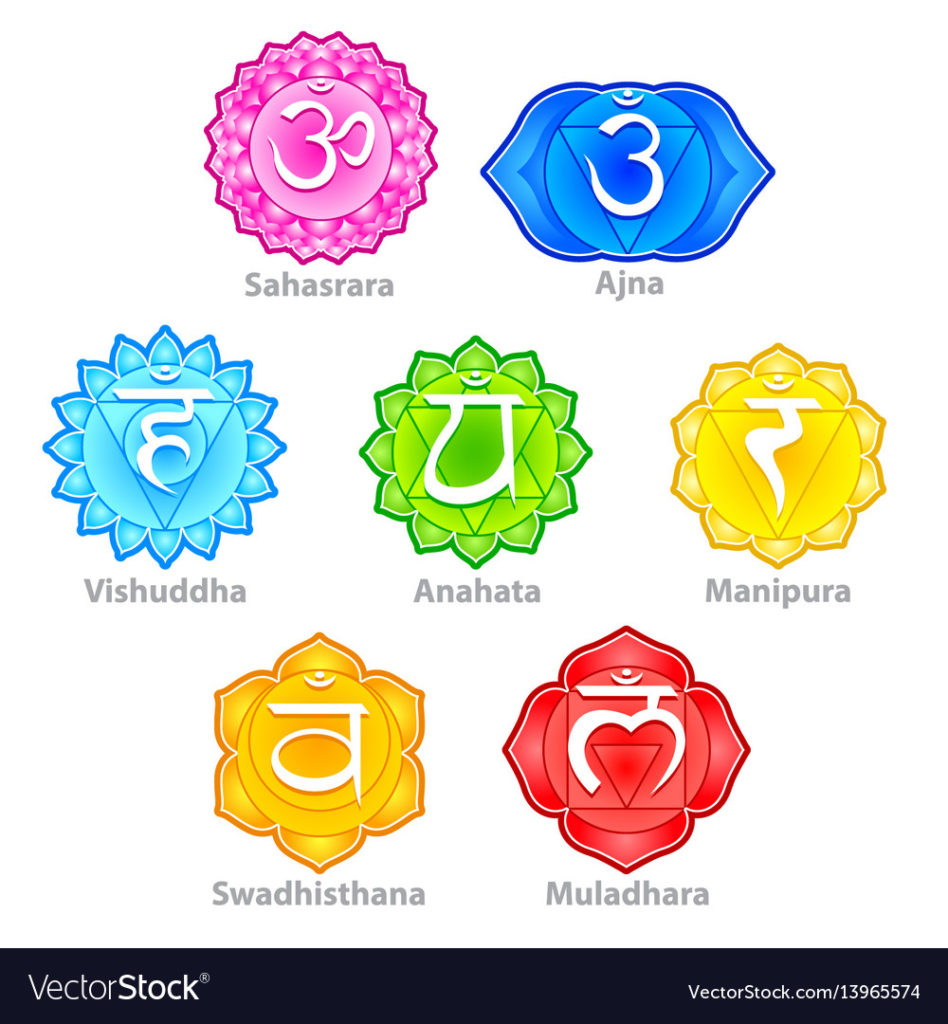
Kundalini is universally recognized and accepted as deeply revered energy that resides within us and it infuses everyday life. While it is acknowledged and identified by many different names (5 Chakras of the body, Shakti, Holy Spirit, etc.) based on the circumstantial religion or belief system, there is a commonality in this realization of cosmic energy. The term is derived from the Sanskrit word “kundal” meaning “coiled one.” Dharma teaching states that this internal energy is coiled like a serpent/snake near the base of the spine. The aim of Kundalini is to awaken that dormant energy. Those who decide to seek Kundalini as a practice to release this coiled energy are said to be rewarded with higher conscious awareness and spiritual enlightenment. Those who awaken Kundalini energy are said to be more balanced; spiritually and emotionally, more creative and more inspired.
As Kundalini is considered to be the life force that drives the everyday functioning of our minds and bodies and in a most obvious sense, the one that supports and grows our spirits, it only makes sense that unlocking it would help practitioners unveil their true creativity and potential.
Less Known Fact: – The practice of Kundalini yoga was developed in India over the last 1,000 years; the West has only experienced Kundalini yoga since the late 1960s, thanks in part to Harbhajan Singh Khalsa, who is also known over the globe as Yogi Bhajan. Following his migration to Canada, Toronto, he began teaching at YMCAs and founded his own Yoga center. The rest is Kundalini’s history.
The pressures of this technological revolution and age increasingly consume more of our fading attention vitality and spans. The kundalini pressure is causing many of us to look deeper within us. We always seek for more than a life based on personal investment statistics, what we look like, or one’s professional status. We want to be connected to bravery, fulfillment, deeper clarity, creativity and effectiveness.
Kundalini Yoga is an ancient art as well as the science dealing with the expansion and transformation of consciousness, the raising and awakening of Kundalini Energy up the spine through energy centers called Chakras (5 chakras of the body). The balancing and activation of the chakras is accomplished by the merging of Prana (cosmic energy) followed with Apana (eliminating energy) which generates high pressure to force Kundalini to rise, by means of Pranayama (breathing exercises), using Asanas (postures), Bandhas (body locks), in Kriyas (exercise sets), Mudras (gestures), and Mantras (sacred sounds).
Kundalini Yoga sets also use projection, focused attention and visualization to attain specific effects. Through the regular practice of Kundalini Yoga, an individual can unite her/his consciousness with Cosmic Consciousness and intelligence on a regular basis by carefully performing the meditations and exercises in a specific combination, routine and sequence, and combination. A student soon becomes capable and proficient at perceiving the movement of energy within and outside of her/his body, and consciously begins to direct its flow to stimulate and awaken the 5 chakras of the body, for healing her or him and others, and becomes a co-creator with universal energies and cosmic energies.
Table of Contents
The main question here is “What is Kundalini?”
Most humans trail toward fulfillment or at least would like to step in that direction. We all have desires, goals, and dreams. And though we face hurdles, difficulties, setbacks, challenges, and obstacles which sometimes discourage us from trying again for years, there is always a glimmer of desire in the heart of every person.
The human body is a complicated and convoluted system enveloping vast energy systems that are not immediately perceptible with our normal eyes. The chakras are energy whirlpool powered by life force (AKA – Prana). By expending the energy blocks from our chakras, we allow the Kundalini energy to rise up through us, uplifting and invigorating our bodies and minds to new heights and higher levels. Asanas, or yoga postures, are positions of the body used to trigger or stimulate and direct energy to open both a physical and an energetic position in the body. When using Kundalini yoga to clear the chakras, asanas are very useful to open the pranic flow of our body.
Kundalini energy is an energy that is suppressed and veiled in all human beings beneath the inorganic and organic matter. The practice of Kundalini is to awaken this latent and sluggish energy and send them through the seven centers of spiritual energy called the chakras. One can attain salvation through the practice of Kundalini yoga, which is said to give both liberation, joy and wisdom.
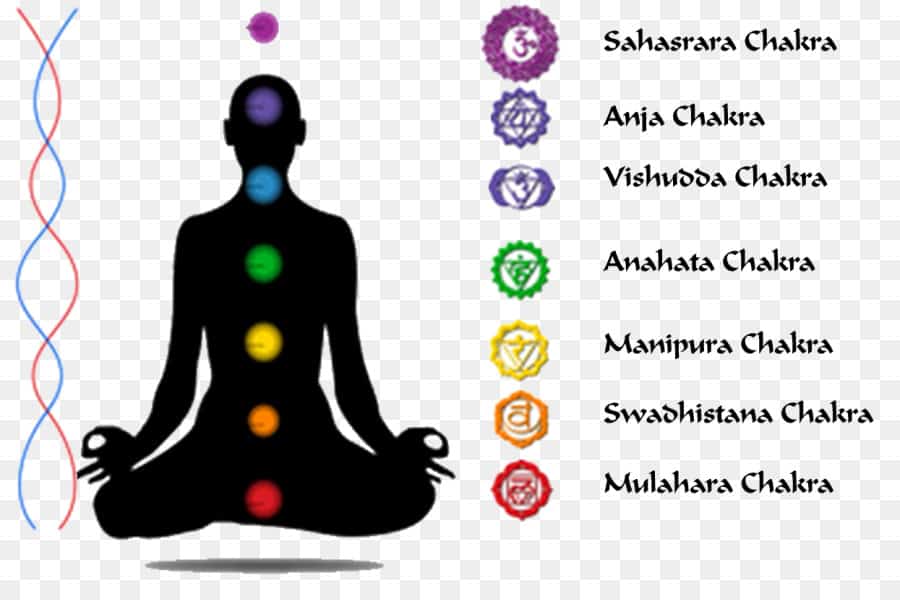
The Practise of Kundalini Yoga Helps With
- Healing manias
- Healing alcohol and drug abuse
- Healing depressions
- Healing sleeplessness
- Healing other mental problems.
First Chakra, the Root Chakra (Muladhara)
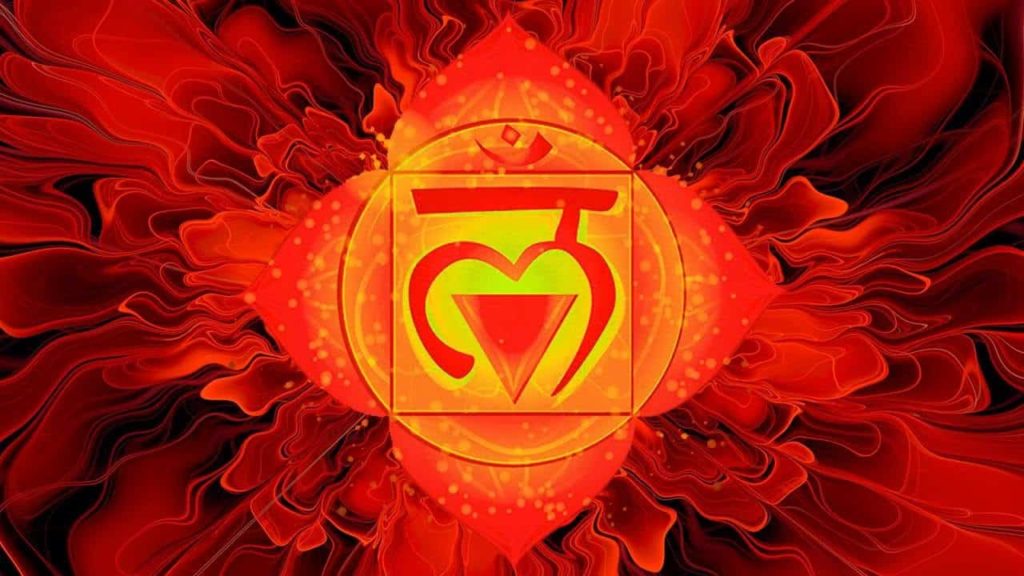
Just as the womb of the mother produces the basic requirement of proteins and nutrients for the growth of the embryo, the Muladhara Chakra forms the base and the starting point for our spiritual path and development. It is the bedrock from which we climb the ladder of the seven Chakras; the root from which we receive the nourishment for our spiritual and mental development. It lies at the lowest part of the spinal column below the Coccyx; it also bears the name “The Root Chakra”.
Kundalini Shakti (spiritual energy) has its base in the Muladhara Chakra, but it is in a deep and motionless sleep. When we awaken this dormant potential that lies within the Muladhara Chakra and we are able to work our way towards the light of knowledge and attain the full ripen fruit of Self-Realisation.
Second Chakra (Svadhishthana Chakra)
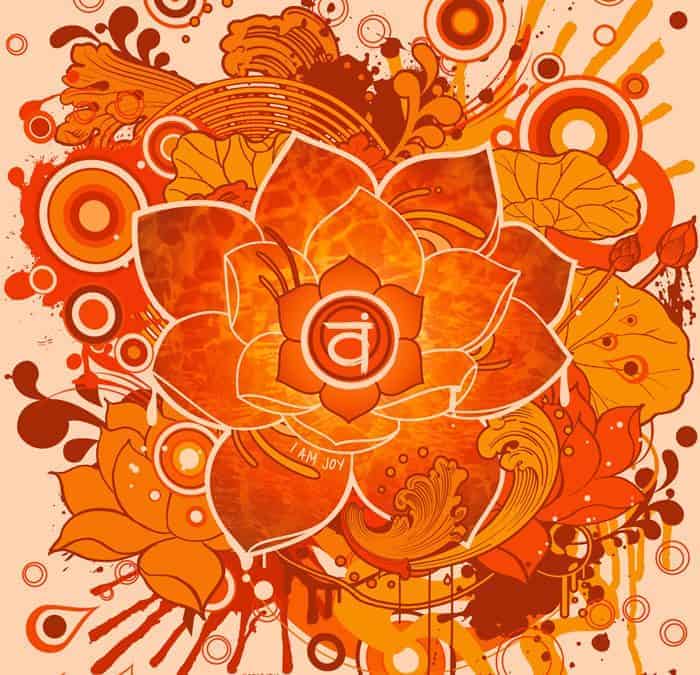
The Svadhishthana Chakra focuses on the second level of our development. The evolution of consciousness towards purity, human consciousness begins in the Svadhishthana Chakra, the second chakra. It is the seat of the subconscious mind where all impressions and life experiences since the beginning of our existence in the womb are captured and stored. The Muladhara Chakra is sort of a storehouse of our Karmas; however, these are activated in the second chakra, Svadhishthana Chakra.
Awakening of the Svadhishthana Chakra brings clarity in our mind and development of the personality. But before this can happen we must purify our consciousness of negative energies. In the symbolic image of the Svadhishthana Chakra is a Lotus with six petals in the kundalini. These represent our negative qualities and energies which are to be overcome – desire, pride, jealousy, anger, hatred, and cruelty. Other base qualities that hinder our development are envy, fear, greed, lethargy, revenge, and doubt.
Third Chakra (Manipura Chakra)

After we have passed through the levels of subconscious and unconscious, the First Chakra and the Second Chakra; our consciousness reaches the third chakra, the Manipura Chakra. With the understanding of the Manipura Chakra, the aspirant has reached an important stage on the spiritual and mental path. For once the consciousness has unraveled in the Manipura Chakra there is a greater likelihood that, under the guidance of a realized meditation one can attain the goal of supreme consciousness in this life. At the Manipura Chakra, more than half of the journey towards realization has already been completed.
Fourth Chakra (Anahata Chakra)
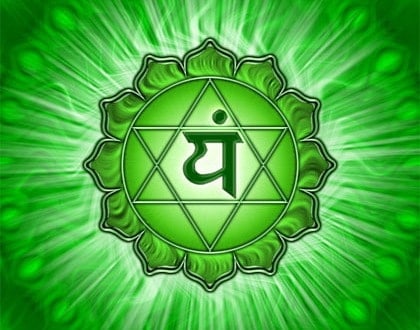
The Anahata Chakra, the fourth chakra is situated in the center of the chest, really close to the heart. Its Mantra is OM. The color that symbolizes the fourth chakra is light blue, the bright color of the clear sky. The analogous element is Air. Air represents expansion and freedom. This means that in this Chakra our consciousness and apprehension can expand into infinity. The Anahata Chakra is the seat of the Divine Self or spirit (AKA – Atma). In the symbolic picture of it, there is a Lotus with twelve petals. These symbolize the Divine qualities of the heart, such as bliss, peace, harmony, love, understanding, empathy, clarity, purity, unity, forgiveness, compassion and kindness. However, the Heart Centre is also the center of feelings and emotions.
Fifth Chakra (Visuddha)
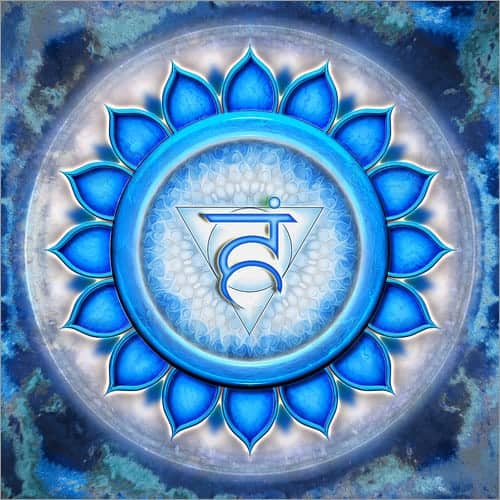
The fifth chakra is the Throat Chakra and it is the first of the spiritual or higher chakras or kundalini on the “chakra ladder”. This chakra is located in the region of the shoulder and neck and its color is blue. The gift of this chakra is speaking your truth, accepting your originality and expressing your authentic voice. The energy of this chakra allows you to seek true knowledge, beyond limitations of space and time, beyond family and cultural conditioning. The main challenge for the fifth chakra is negative thinking and doubt. When you advance and verify your knowledge through direct experience and meditation, then all the negativity and doubt are removed.
Sixth Chakra (Ajna)
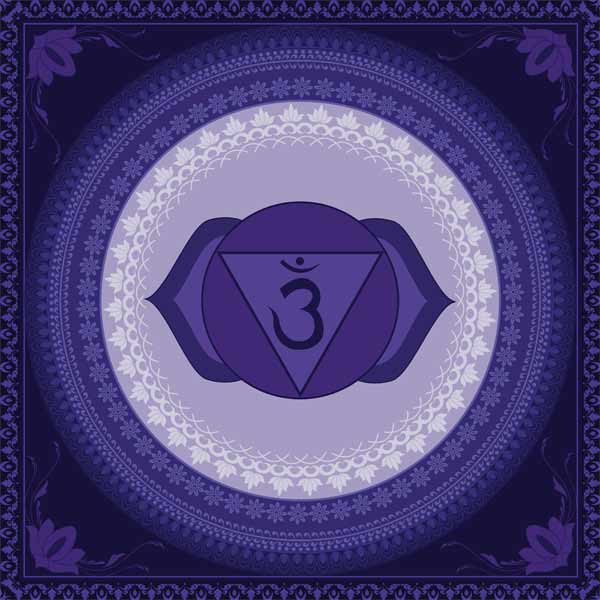
The Third Eye Chakra, Ajna transcends time. It is located in the brain, at the eyebrow, above the upper base of the nose. The gift of this kundalini chakra is seeing both outer and inner worlds. The energy of this chakra allows us to experience clear thought as well as gifts of self-reflection and spiritual contemplation. Through the gift of seeing we can embody the outer world and with symbolic language we can exemplify the inner world. The energy of Ajna allows us to access our inner guidance and wisdom that comes from the depths of our soul. It allows us to cut through illusion and to access deeper truths and the bigger picture, to see beyond the words and beyond the mind.
Seventh Chakra (Sahasrara)
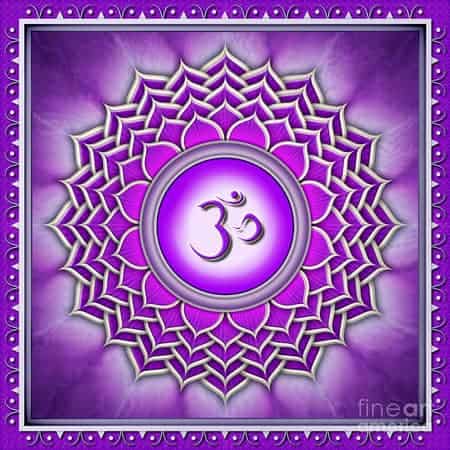
Sahasrara is the Sanskrit name for the chakra placed in the crown area of the head. It is the highest of the seven primary chakras in Kundalini. It is usually symbolized by the color violet. This vortex or a wheel, of pranic energy, is said to be the center of one’s spiritual connection to the divine and soul, and yogic teachings contend that it gives us the ability to experience a connection with the universal consciousness or the God.
Sahasrara, the seventh chakra may also be referred to as the crown chakra in English.
ALSO READ:
Simple Yoga Asanas To Reduce Belly Fat
Best Home Remedies For Pimples

